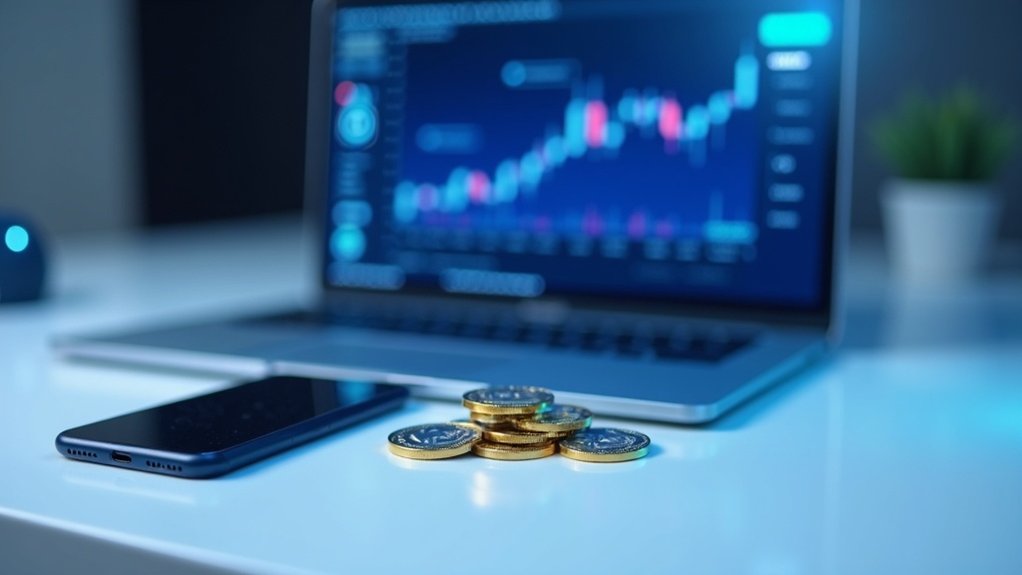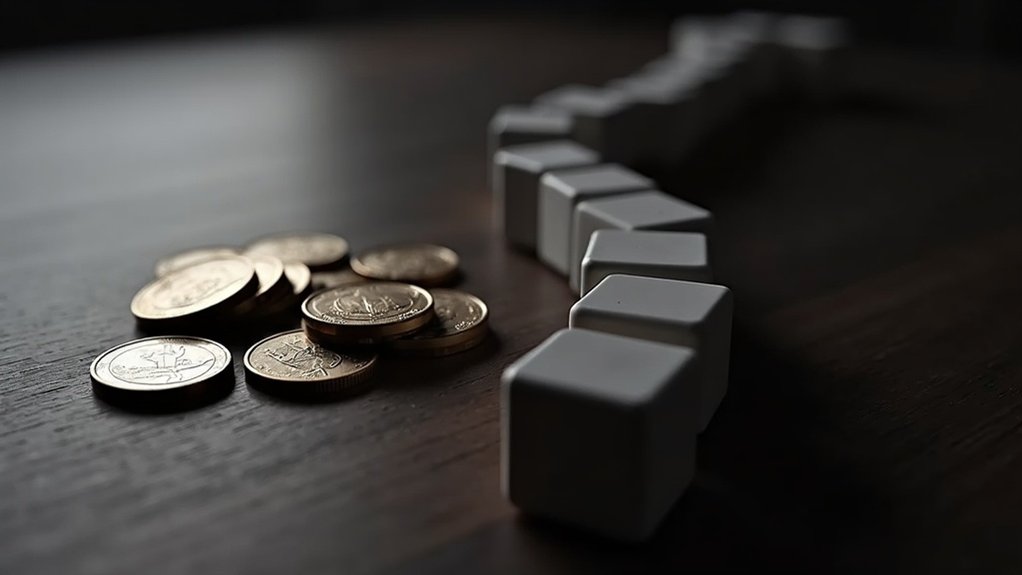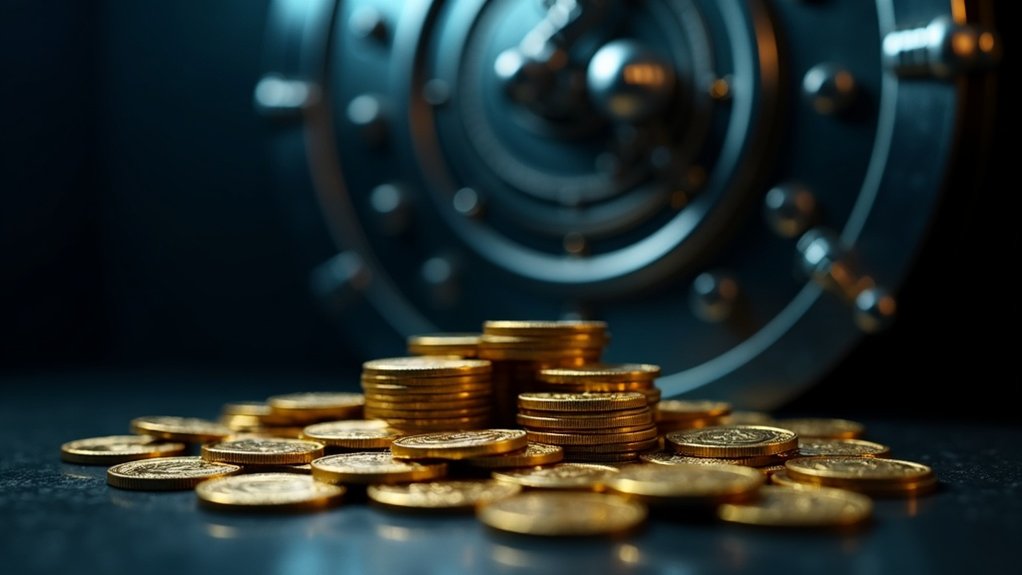Buying cryptocurrency isn’t rocket science. First, choose an exchange like Coinbase or Kraken. Create an account with your ID and email. Set up two-factor authentication—yes, it’s annoying but necessary. Connect your bank account or card to deposit funds. Pick your crypto (Bitcoin, Ethereum, whatever looks interesting). Execute your purchase with market or limit orders. Fees vary. Prices fluctuate wildly. The crypto world awaits with both pitfalls and opportunities for the curious newcomer.
Wondering how to buy cryptocurrency? It’s not rocket science, but it does require some know-how.
First, you’ll need to choose between centralized exchanges (CEXs) like Coinbase or decentralized exchanges (DEXs).
Your first crypto decision: CEX or DEX? Company-managed simplicity or peer-to-peer freedom.
CEXs are company-managed with user-friendly interfaces.
DEXs let you trade peer-to-peer directly on blockchain. No middleman. Pretty cool.
Beginner-friendly platforms include Coinbase, Gemini, Kraken, and eToro.
They’re compliant with regulations and have solid security.
When picking an exchange, look at trading volume, variety of assets, fees, and account minimums.
Some even throw in perks like Coinbase’s $200 crypto bonus. Free money? Yes, please.
Setting up an account is straightforward.
You’ll need to verify your identity with personal information—Social Security Number for Americans, email, maybe government ID.
It’s annoying but necessary.
Most platforms offer free account creation with no minimum deposits.
Use a strong password and enable two-factor authentication.
Don’t be stupid about security.
Next, deposit funds.
Connect your bank account or card to transfer fiat currency (regular money like USD).
Deposits can be instant with credit cards or crypto transfers.
Bank transfers? Those take days.
Sometimes there are fees. Sometimes not. Depends on the platform and payment method.
Time to select cryptocurrencies.
Know the ticker symbols—Bitcoin (BTC), Ethereum (ETH), Litecoin, Chainlink, Solana.
Choose based on your goals and the project’s fundamentals.
Prices vary wildly from pennies to thousands per token.
The cryptocurrency market is known for its high volatility, which can create both risks and opportunities for traders.
You can even use Bitcoin ATMs to purchase cryptocurrency with cash at physical locations.
Diversification helps reduce risk.
One basket, all eggs? Bad idea.
For purchases, use market orders for immediate execution at current prices or limit orders to buy at a specific price.
Some platforms allow fractional purchases—you don’t need to buy a whole Bitcoin.
Platforms like eToro provide CopyTrader™ feature that lets beginners replicate successful traders’ moves automatically.
Check fees before confirming any transaction. They add up fast.
And there you have it. You’re now ready to join the crypto revolution. Or lose your shirt. Either way, you know how to buy in.
Frequently Asked Questions
What’s the Tax Implication of Crypto Trading?
Crypto trades trigger capital gains taxes. Period. The IRS views crypto as property, not currency.
Every sale, trade, or purchase using crypto creates a taxable event.
Holding time matters—under a year gets taxed at ordinary income rates (up to 37%), over a year qualifies for long-term rates (0-20%).
NFTs might face collectible rates (28%).
Losses can offset gains plus $3,000 of income.
Record-keeping? Absolutely essential. The tax man always finds you.
How Do I Secure My Cryptocurrency From Hackers?
Cryptocurrency security means layers.
Hardware wallets like Ledger keep keys offline—hackers can’t touch what isn’t connected.
Two-factor authentication is non-negotiable.
Seriously. Every account needs it.
Strong passwords, never reused. Phishing emails? Delete them.
Backups matter. Write down seed phrases, lock them away. Multiple copies, different locations.
Public WiFi is a hacker’s playground. Avoid it when checking crypto accounts.
Updates aren’t optional. Old software = open doors for thieves.
Can I Buy Cryptocurrency With a Credit Card?
Yes, but it’s complicated.
Major banks like Wells Fargo and Bank of America block crypto purchases with credit cards. Some exchanges like Coinbase accept them, though.
Expect hefty fees—credit card companies might charge 3-5% cash advance fees, plus exchange fees.
That’s an 8% hole to climb out of before seeing profits.
Transactions require KYC verification.
And remember: buying volatile assets with borrowed money? Not exactly a move financial geniuses are known for.
What Happens if I Forget My Crypto Wallet Password?
Forgetting a crypto wallet password can be devastating. Consequences vary by wallet type.
With custodial wallets, users can typically reset via email verification.
Non-custodial wallets? That’s where it gets ugly. No recovery phrase, no funds. Period.
Some wallets offer password hints, but they’re not miracle workers.
Professional recovery services exist—they’re expensive though.
Repeated wrong attempts? Could trigger lockouts.
The crypto world doesn’t forgive carelessness.
Recovery chances decrease with time. Act fast or cry later.
Are There Age Restrictions for Buying Cryptocurrency?
Yes. Major crypto exchanges require users to be 18+ due to KYC/AML regulations.
No federal laws explicitly ban minors from owning crypto, but good luck accessing platforms without ID verification.
Teenagers aren’t completely locked out though. They can use parent-managed custodial accounts, P2P platforms, or crypto gift cards.
Some Bitcoin ATMs don’t check ID either. Or they could just earn crypto through work or airdrops.
Parents usually manage the whole thing anyway.









